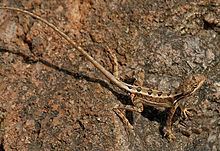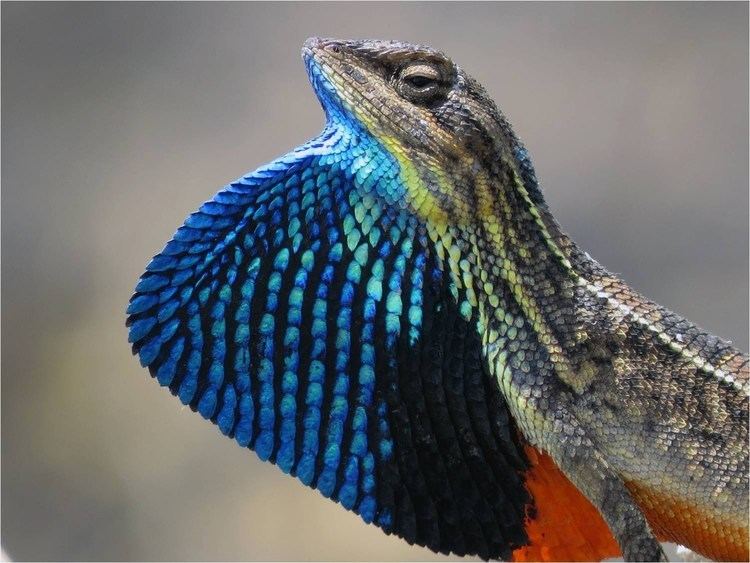Subphylum Vertebrata | Phylum Chordata Class Reptilia Suborder Iguania Rank Species | |
Similar Sitana, Calotes, Peninsular rock agama, Lyreshead lizard, Blanford's rock agama | ||
Fan throated lizard sitana ponticeriana
The fan-throated lizard (Sitana ponticeriana) is a species of agamid lizard found in Southern India. It was earlier thought to be widespread but studies in 2016 resulted in the splitting of the group into several species placed in two genera.
Contents
- Fan throated lizard sitana ponticeriana
- Fan throated lizard sitana ponticeriana by dr akash akinwar
- Descriptions
- Distribution
- References
The species is found mostly on the ground in open ground patches in thin forests. When disturbed this lizard sometimes runs with a bipedal gait.
Fan throated lizard sitana ponticeriana by dr akash akinwar
Descriptions
Upper head-scales small, sharply keeled; canthus rostralis and supraciliary edge sharp, with much enlarged scales. Dorsal scales larger than ventrals, with sharp keels forming straight longitudinal lines; lateral scales smallest, uniform or intermixed with scattered enlarged ones. The fore limb does not extend on to the vent, if laid backwards; the hind limb reaches to the orbit, if laid forwards; the lower thigh is rather shorter than the foot (measured from the heel to the tip of the longest toe), the length of which is only three-fourths of the distance between the shoulder and hip joints. Limbs above with uniform strongly keeled scales. The length of the limbs varies very much : in some specimens the hind limb stretched forwards does not extend beyond the orbit, in others it reaches the end of the snout or even considerably beyond. Brown, with a series of dark spots along the middle of the back, the spot on the neck being the darkest; a whitish band along each side of the back. Gular appendage tricoloured—blue, black, and red.

Tail round, slender, once and a half to twice as long as the head and body, covered with equal keeled scales. Olive-brown above, with a series of rhomboidal spots along the middle of the back; a more or less distinct light band along each side of the back. Gular appendage tricoloured—blue, black, and red; this appendage is more developed in the breeding-season, and in the majority of individuals, at all events, is not coloured at other times.

This species attains a maximum length of 8 inches, of which the tail takes 5 inches. From snout to vent 3-5 inches. Ebanasar (1989) reported the histomorphology of thyroid gland and thyroid activity in Sitana ponticeriana in juveniles, males and females with different ovary maturation stages. He has also reported ovoviviparity in females from Madurai and Virudhunagar areas of Tamil Nadu.
M. A. Smith notes that there are two size variants with intermediates :

Distribution
Fan-throated lizards are distributed across the Indian Subcontinent. In the past they were all included in a single species but a 2016 study pointed out to the existence of six species in two genera. Sitana ponticeriana in the strict sense occurs only in the Coromandel coast around Pondicherry.
